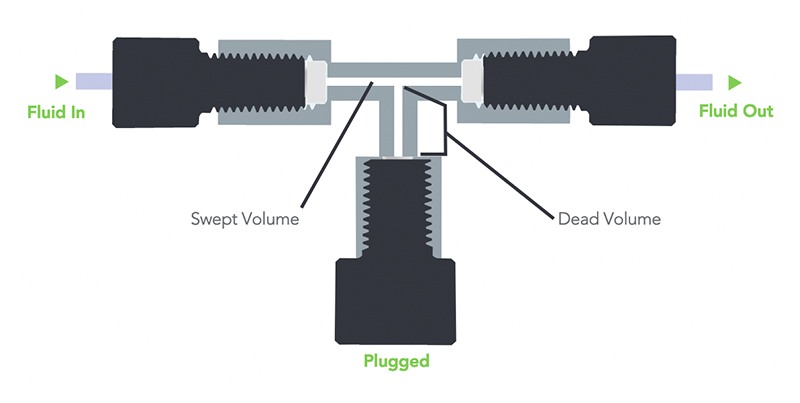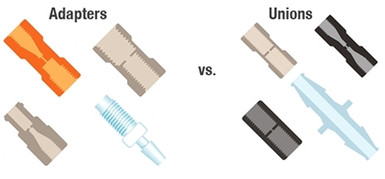30th Dec 2020
What Is the Difference Between a Union and an Adapter in HPLC?
Basically, adapters “adapt” between two different types of thread/port configurations, while unions have the same thread/port configuration on both sides (which makes unions typically more economical). A range of HPLC accessories, like adapters and connectors, are available through Chrom Tech, including barbed Y-connectors, T-connectors, and female-to-female or male-to-female adapters.
Factors in Considering Which Union/Adapter Is Right for My Connection
First, consider the connection you are attempting to make. Is it a high-pressure or low-pressure connection? If you are connecting two pieces of tubing, the connection is always limited to the pressure of the softer tubing. For example, if you are connecting 1/16” OD PEEK tubing and 1/8” OD FEP tubing, then, you would be making a low-pressure connection, as FEP is the softer tubing, and its pressure limit would be 500 psi.
Once you know if you are looking for a low- or high-pressure connection, you need to find out what type of port your tubing can accommodate. For example, for low-pressure connections, a number of low-pressure unions with 1/4-28 internal flat-bottom geometry on both sides are available. Even if you want to connect 1/8” OD tubing to 1/16” OD tubing, you can still use a ¼-28 thread union (as both sizes of HPLC tubing can accommodate ¼-28 threads). Please contact Chrom Tech for assistance in selecting the appropriate fittings for your HPLC connections. In this same scenario (connecting 1/8” OD tubing to 1/16” OD tubing), another option would be to use an adapter (different port geometries), but finding a union is typically the most economical option.
Often, when making connections, people want more information on the amount of “dead volume” in the connection. However, most people who inquire about the dead volume really want to know just how much internal volume exists within a connection, not how much of that internal volume is considered “dead.”
What Is Dead Volume, Is It the Same as Swept Volume or Void Volume?
Dead volume is that portion of the void volume that is out of the flow path.
Swept volume is that portion of the void volume in a connection directly in the fluid pathway.
Void volume is simply another way of describing the total internal volume. It is defined as any space within a connection into which fluid can flow, therefore:
VOID Volume = Dead Volume + Swept Volume.
Dead Volume can cause undesirable chromatographic effects, including:
- Peak Broadening
- Poor Resolution
- Sample Carry-Over
- Split Peaks
Since dead volume has significant negative effects, reducing dead volume in your chromatographic system is critical. Chrom Tech recommends Zero Dead Volume (ZDV) unions whenever possible.
Another tip in reducing dead volume is to match the tubing ID as closely as possible with the diameters of the thru-holes in your system. This helps the fluid run completely through the entire internal passageway and reduce turbulence.
Summary
In summary, many HPLC accessories can be used to make good HPLC connections, including unions, threaded adapters, barbed adapters (connecting tubing through the inner diameter of the tubing), and luer adapters. Please contact Chrom Tech for assistance in selecting the appropriate fittings, unions, or adapters for your HPLC connections.

